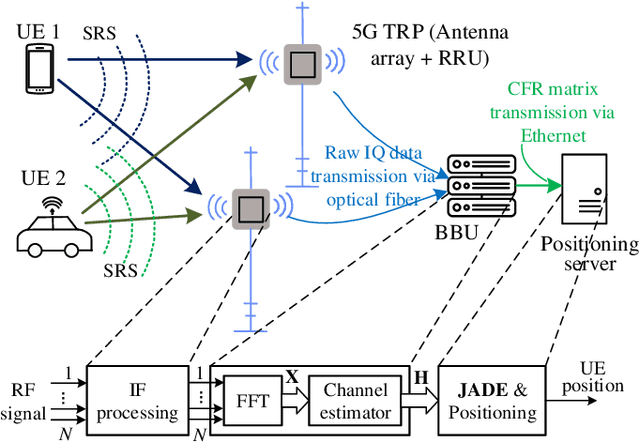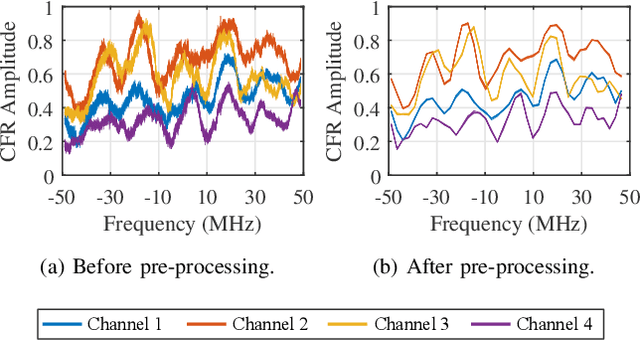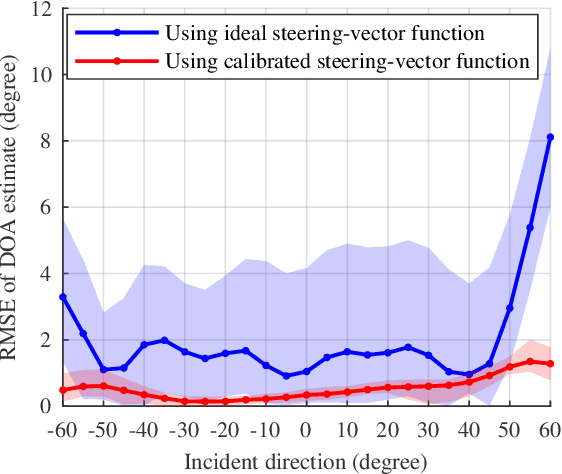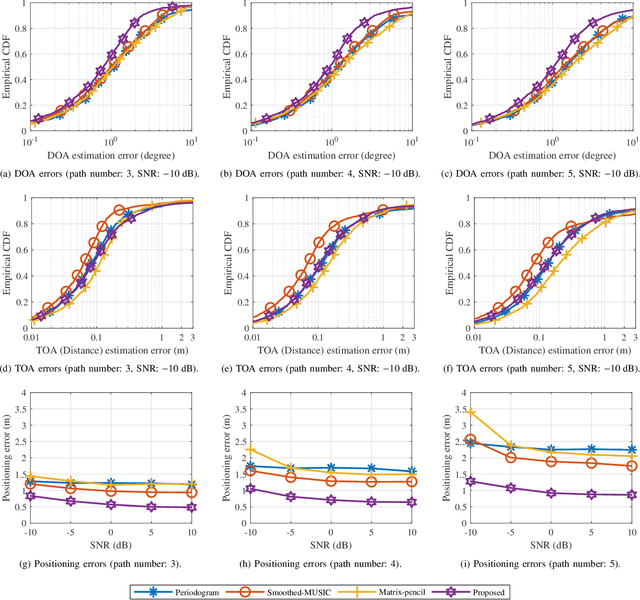Xinghua Jia
Link-level simulator for 5G localization
Dec 26, 2022Abstract:Channel-state-information-based localization in 5G networks has been a promising way to obtain highly accurate positions compared to previous communication networks. However, there is no unified and effective platform to support the research on 5G localization algorithms. This paper releases a link-level simulator for 5G localization, which can depict realistic physical behaviors of the 5G positioning signal transmission. Specifically, we first develop a simulation architecture considering more elaborate parameter configuration and physical-layer processing. The architecture supports the link modeling at sub-6GHz and millimeter-wave (mmWave) frequency bands. Subsequently, the critical physical-layer components that determine the localization performance are designed and integrated. In particular, a lightweight new-radio channel model and hardware impairment functions that significantly limit the parameter estimation accuracy are developed. Finally, we present three application cases to evaluate the simulator, i.e. two-dimensional mobile terminal localization, mmWave beam sweeping, and beamforming-based angle estimation. The numerical results in the application cases present the performance diversity of localization algorithms in various impairment conditions.
Efficient Joint DOA and TOA Estimation for Indoor Positioning with 5G Picocell Base Stations
Jun 20, 2022



Abstract:The ubiquity, large bandwidth, and spatial diversity of the fifth generation (5G) cellular signal render it a promising candidate for accurate positioning in indoor environments where the global navigation satellite system (GNSS) signal is absent. In this paper, a joint angle and delay estimation (JADE) scheme is designed for 5G picocell base stations (gNBs) which addresses two crucial issues to make it both effective and efficient in realistic indoor environments. Firstly, the direction-dependence of the array modeling error for picocell gNB as well as its impact on JADE is revealed. This error is mitigated by fitting the array response measurements to a vector-valued function and pre-calibrating the ideal steering-vector with the fitted function. Secondly, based on the deployment reality that 5G picocell gNBs only have a small-scale antenna array but have a large signal bandwidth, the proposed scheme decouples the estimation of time-of-arrival (TOA) and direction-of-arrival (DOA) to reduce the huge complexity induced by two-dimensional joint processing. It employs the iterative-adaptive-approach (IAA) to resolve multipath signals in the TOA domain, followed by a conventional beamformer (CBF) to retrieve the desired line-of-sight DOA. By further exploiting a dimension-reducing pre-processing module and accelerating spectrum computing by fast Fourier transforms, an efficient implementation is achieved for real-time JADE. Numerical simulations demonstrate the superiority of the proposed method in terms of DOA estimation accuracy. Field tests show that a triangulation positioning error of 0.44 m is achieved for 90% cases using only DOAs estimated at two separated receiving points.
 Add to Chrome
Add to Chrome Add to Firefox
Add to Firefox Add to Edge
Add to Edge